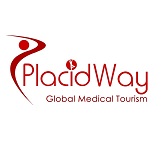About Us
Conference series is proud to host upcoming “6th International Conference on Enzymology and Molecular Biology” throughout August 19-20, 2020 at Paris, France. This is an exceptional opportunity for the delegates from Universities and Institutes to engage with the world magnificence Scientists. The conference revolves across the subject – “Novel Advancements in Enzymology and Molecular Biology”.
The huge issue coverage of the Conference and its size provide an remarkable placing for individuals to benefit precious insight into progress in research areas beyond their very own. In addition a number special classes targets to engage contributors on broader troubles which include teaching within the enzymology and molecular biology research.
The Enzymology Conference has a robust emphasis on aid and idea for the subsequent era of scientists, in conjunction with early-career researchers, a Young Researchers Forum, and sports to inspire interaction with peers and specialists.
Scientific Sessions
Track 1: Enzyme discovery
Enzymes are both macromolecular and micromolecular proteins and are located evidently. They are macromolecular biological catalysts and boost up chemical reactions. Enzymology deals with the study of enzymes, their kinetics, structure, and function, in addition to their relation to each different. Enzymes play a totally crucial function in the world. They act as a catalyst for a chemical response, whether that reaction includes the execution of DNA for the cause of cellular repair or for the digestion of any forms of meat as well as fowl. Biochemistry is the department of technology which offers with the chemical strategies within and associated with residing organisms. It is a laboratory based totally science that mixes each biology and chemistry. Biochemistry mainly focuses on methods that occur at a molecular level like interior our cells, reading components like proteins, lipids and organelles. It also looks at how cells speak with each other. Biochemists need to apprehend how the molecular structure relates to its function, and then allow them to are expecting that how the molecules will have interaction. Biochemistry covers a number medical disciplines, which incorporates genetics, microbiology, forensics, plant technology and medication.
Track-2: Molecular Enzymology & Enzyme mechanisms
Molecular enzymology is that department of biochemistry which encircles or offers with the functional in addition to the structural characteristics of the enzymes within a molecular degree. Enzymes are globular proteins which play a completely essential role as a catalyst for any type of biochemical reactions. Molecular enzymology is based on designing and enzyme synthesis and excessive unmet medical wishes are based on innovative drug objectives. These works are based totally on revolutionary drug targets. Molecular Enzymology's hobby consist of in all factors related to enzymes like discovery of enzymes, structure of enzymes, enzyme mechanisms, cellular and metabolic capabilities of enzymes, discovery of medication, biochemical aspects of enzymes, bioinformatics, computational analysis, research for molecular modeling, newer strategies in enzyme expression in addition to purification, bio catalysis, bio molecular engineering, enzyme kinetics and enzyme inhibitors.
Track-3: Clinical Enzymology & Enzyme engineering
Clinical enzymology deals with the measurement of enzyme activity for the analysis and remedy of sicknesses. Enzymes are macromolecular catalysts which growth the price or pace of physiologic reactions. Each and every reaction happening every day in our frame takes vicinity with the assist of an enzyme or the opposite. In widespread, most of the enzymes are found in cells at plenty better concentrations than that in plasma. Measurement of these tiers in plasma shows whether or not their tissue of starting place is broken causing to the discharge of intracellular additives into the blood. This forms the premise of what's known as medical enzymology. Thus we will say that clinical enzymology refers to size of enzyme hobby for the analysis in addition to the remedy of diseases.
Track 4: Introduction to the CRISPR/Cas9 system and Genome Editing
Although recently developed programmable editing tools, such as zinc finger nucleases and transcription activator-like effector nucleases, have significantly improved the capacity for precise genome modification, these techniques have limitations. CRISPR (clustered regularly interspaced short palindromic repeats)/Cas9 technology represents a significant improvement over these other next-generation genome editing tools, reaching a new level of targeting, efficiency, and ease of use. The CRISPR/Cas9 system allows for site-specific genomic targeting in virtually any organism.
Track 5: Macromolecular Biochemistry & Tissue Engineering
Macromolecular Biochemistry is a section of the Leiden Institute of Chemistry at Leiden University, comprizing the PIs Marcellus Ubbink and Remus Dame. The research is aimed at understanding protein & nucleic acid structure, function and interactions. Particular interests comprise protein-protein interactions & enzyme function (Prof. Ubbink) and biophysical aspects of protein - DNA interactions (Dr. Dame).
Track 6: Biological Imaging, Biomechanics & Biomolecular Engineering
Recent advances in computational and bio imaging techniques have greatly enhanced the ability of biomedical engineers to better understand the dynamics of the human body and functions of living organisms. Specifically, recent advanced computational, mathematical, and physical methods have helped researchers to develop sophisticated techniques that can solve the problems encountered in the fields of bionics and biomechanics and improve the visualization of biological systems and design of new medical devices. Prominent examples include the tagged magnetic resonance imaging for studying brain biomechanics and medical ultrasound imaging for imitating animal echolocation. These advances in imaging and visualization methods are helping identify, classify, and quantify patterns in bionics and biomechanical investigations.
Track 7: Structural Biochemistry, Synthetic Biology & Tissue Engineering
Structural Biochemistry/Enzyme. Enzymes are macromolecules that help accelerate (catalyze) chemical reactions in biological systems. This is usually done by accelerating reactions by lowering the transition state or decreasing the activation energy. ... These residues are called the catalytic groups. Enzymes made from artificial molecules which do not occur anywhere in nature have been shown to trigger chemical reactions in the lab, challenging existing views about the conditions that are needed to enable life to happen. A team of researchers have created the world’s first enzymes made from artificial genetic material.
Track 8: Advances in cellular and molecular biology
There have been a number of major advances in molecular biology in the past few years and the aim of this review is to describe some of these advances, focusing on their benefits and limitations when applied to investigating pulmonary disorders. It is written with the practising pulmonary researcher in mind, not as an introduction for the uninitiated. Useful web addresses and a list of references are included to enable interested readers to examine each technique in detail.
Track 9: Enzyme engineering and recombinant enzyme technology
Enzyme engineering or protein engineering is the process of designing proteins or enzymes by changing the sequence of amino acids through recombinant DNA mutation. Directed revolution and rational design are the two techniques used in enzyme engineering or protein designing in the process of drug discovery.
Track 10: Current approach in biochemical techniques & Regenerative Drug
Controlling structural organization and signaling motif display of biomimetic matrices at the nanometer scale is of great importance to the functional design of tissue regenerating materials. We have genetically engineered M13 bacteriophage (phage), naturally occurring nanofiber-like viruses, to display a high density of cell-signaling peptides on their major coat proteins. Structural orientation of these phage building blocks can be achieved due to their long-rod shape and monodispersity, which lead them to self-assemble into directionally organized liquid crystalline-like materials. We showed that the constructed viral nanofiber scaffolds were able to support neural progenitor cell proliferation and differentiation as well as direct orientation of their growth in three dimensions.Suchfunctionalized and structurally aligned phage matrices offer promising opportunities for therapies that address challenging medical problems, such as nerve tissue regeneration after spinal cord injuries, or as in vitro model systems for studying complicated cell signaling environments.
Market Report
The growing demand for processed foods and increasing health consciousness in the people is driving the food & beverages industry which in turn is driving the food enzymes market. Food enzymes are a major food additives which convert complex molecules in to simpler ones in our diet. The food enzymes market was valued is expected to reach USD 2.7 billion by 2022, with a CAGR of 8.1% for the forecast period of 2017-2022. Food enzymes market in Italy is expected to grow at a CAGR of ~ % from 2017-2022 and reach a value of USD ~ million by 2022.
The demand for processed and packaged foods is growing with the need to provide food security and safety. However, due to complexities in the global food supply chain, there is a need to add food additives to keep intact the nutritional content and maintain the shelf life. Apart from these reasons, the increasing penetration of organized retail in urban and rural centers globally seem to drive the need for food enzymes. The key restrains the market faces is in terms of unclear regulatory process and high Research and development costs.
The report is segmented based on enzymes types which include Carbohydrases, proteases and Lipases. , carbohydrases dominate the market followed by proteases and lipases. Food enzymes find major application in Bakery, Dairy & Frozen products, Enzymes, Meat products, Oils and Fats among others. Bakery is the largest application market, as food enzyme are used to improve dough stability and shelf life of end products. Increased use of enzymes in cheese processing is driving the use of enzymes in dairy industry, which is the second largest application market followed by the beverages industry.
Europe constitutes 28% of the global food enzymes share. The Carbohydrase Europe market was valued at USD 503 billion in 2015, and is estimated to grow at a CAGR of 6.4% during 2017-2022. Europe carbohydrates market account for nearly 20% of the global carbohydrases market. Europe is expected to see a slow growth as the European Union has recently imposed a legislation to assess the risks associated with the use of enzymes in food industry.
Some of the players who have been profiled in this report include AB Enzymes, Novozymes, Sunson Industry group, Cargill, Tate & Lyle among others. The market sees opportunities for growth in emerging and developed nations as food enzymes reduce water, energy and wastage costs. The market needs amendments to develop a set of guidelines to regulate the market.












